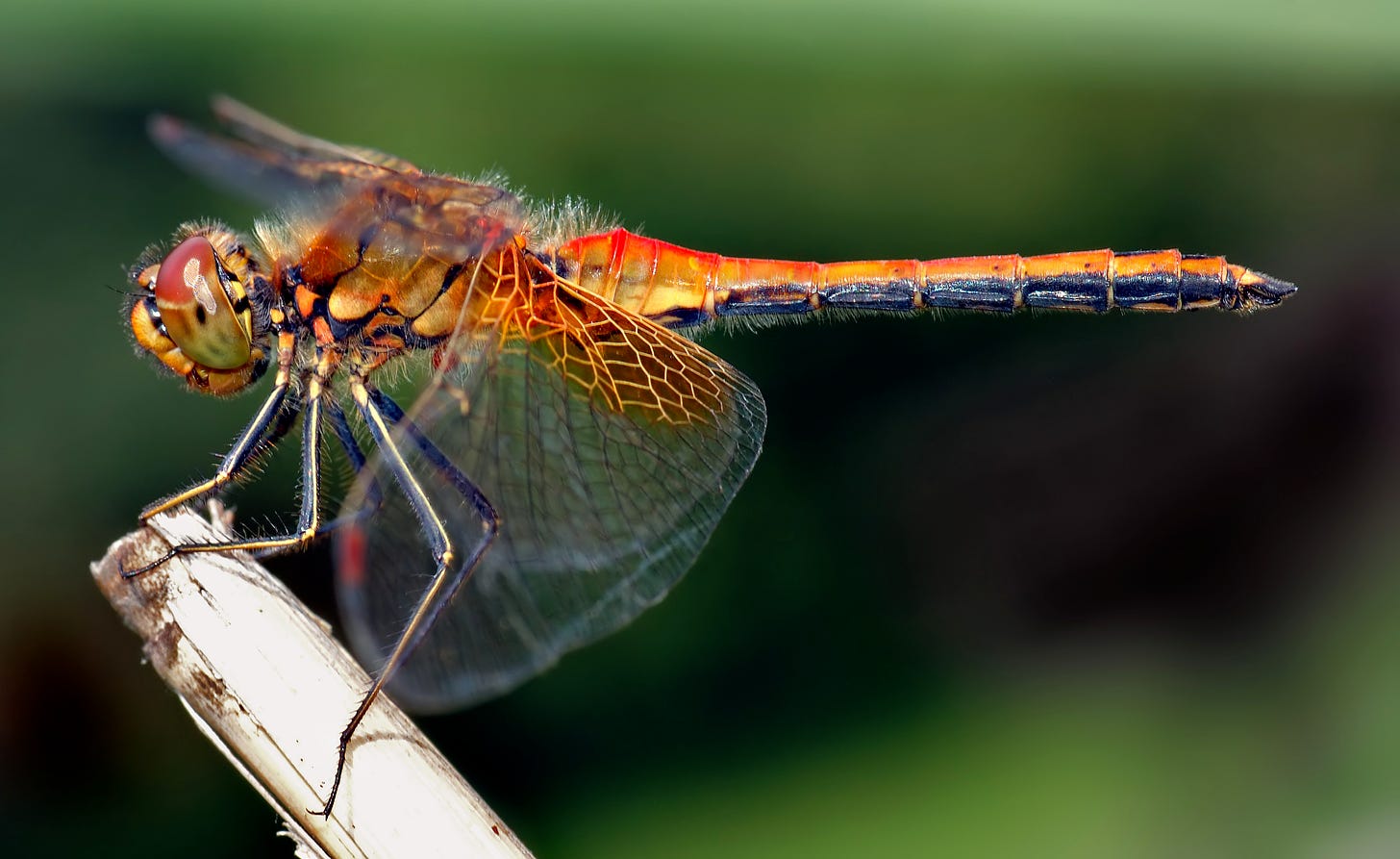“Here be dragons" follows the medieval practice of using illustrations of dragons, sea monsters and other mythological creatures to warn of the many dangers lurking on uncharted territory and maps.
In some cultures, dragonflies bring good luck: this was true for me as they have been the catalyst for my new Substack newsletter ‘Micro Travels with Mary’.
Inspiration from a dragonfly
I will write weekly of my encounters amongst the natural and manmade objects and features that make a location special. They will also guide me through the 52 micro-seasons across any year, far more interesting than simply talking about four broad seasons. They will include what we simply fail to notice; perhaps because they are usually experienced locally, sometimes everyday so we no longer see them: details that require me to stop, look and listen. But I will also look for links to the wider landscape, in particular travel, as that is my world.
What’s in a Name?
The name dragonfly doesn’t originate because they resemble dragons. Rather, it’s because of a mistranslation from Romanian ‘drac’ meaning devil, but also dragon - hence dragonfly into English. I’m not convinced, and would welcome your comments.
A beautiful Yellow-winged Darter. Image by André Karwath Aka
These ancient insects can be found in abundance in the old chalk quarry near my home. Never still, they zoom off on a horizontal plane, or straight up and down, catching their prey on the wing. They are usually found near fresh water, ponds, streams and rivers, so it’s no surprise they are in abundance around the quiet ponds that fishermen and migrating birds now frequent.
Hunter gatherers
I notice their vivid reds, greens and blues this year contrasting with the washed out parched brown fields. But until today, they were a passing fancy, these little insects whose prehistoric ancestors were the size of eagles!
Whilst out walking with my dog Leo, I met a man who was hunting for dragonflies, spotting what was around that day. Huge binoculars and sunhat, typical of twitchers, he was all poised to click and record. We chatted and it is thanks to this dragonfly spotter that I took a fresh look at this remarkable insect, and started writing.
Flying Machines
Did you know their excellent vision and superb upwards, downwards and straight-off flying has inspired some flying machines? They are an indicator too of a healthy eco-system, so delighted I am sharing my space with these remarkable creatures.
They also gobble up the scourge of nations and travellers: mosquito larvae and adults.
The former quarries that surround me were once busy with heavy machinery with its own railway and cement factory, but are now designated Sites of Special Scientific Interest (SSSI). They are now places full of rare orchids and abundance of wildlife, so fitting then to find dragons in this former industrial site now returned to pristine wilderness.
If you are interested in travel, traditions and the quirky, then we have a lot in common. You can subscribe to my newsletter below.
Crossing Oceans
Despite being excellent flyers, an adult won’t travel too far. One exception is the globe-skimmer…what a wonderful name for this special long-haul insect flying 18,000 km back and forth across the Indian Ocean. Mind-boggling!
If you are interested in wildlife conservation, Charles Anderson offers marine tours
Make your own discoveries
If this has wetted your appetite you can become a spotter too with this handy guide.
My “A Year in the Chilterns’ blog that has charted three years slowly uncovering the changing landscape in the naturally outstanding Chiltern Hills can be enjoyed here.



